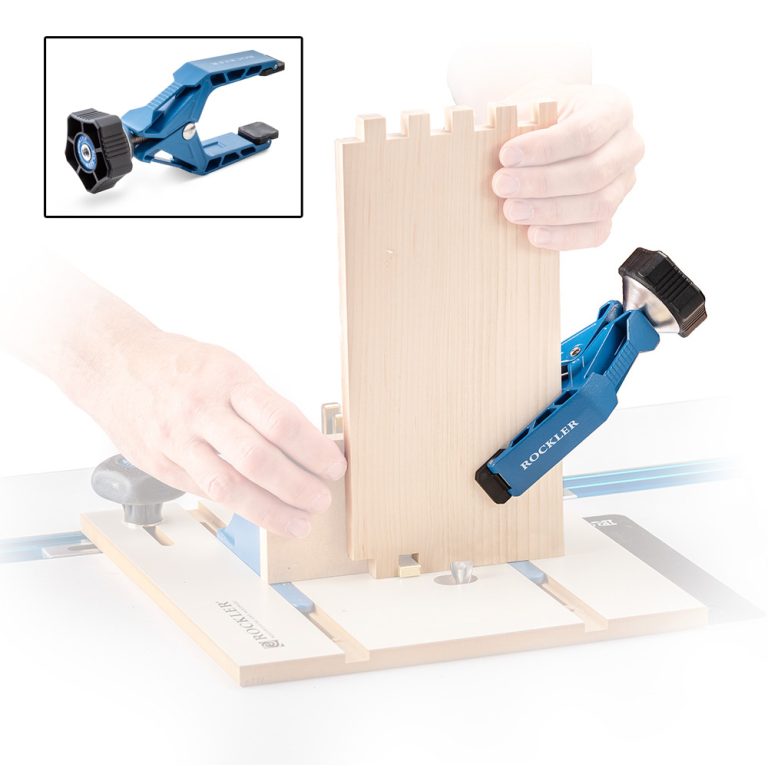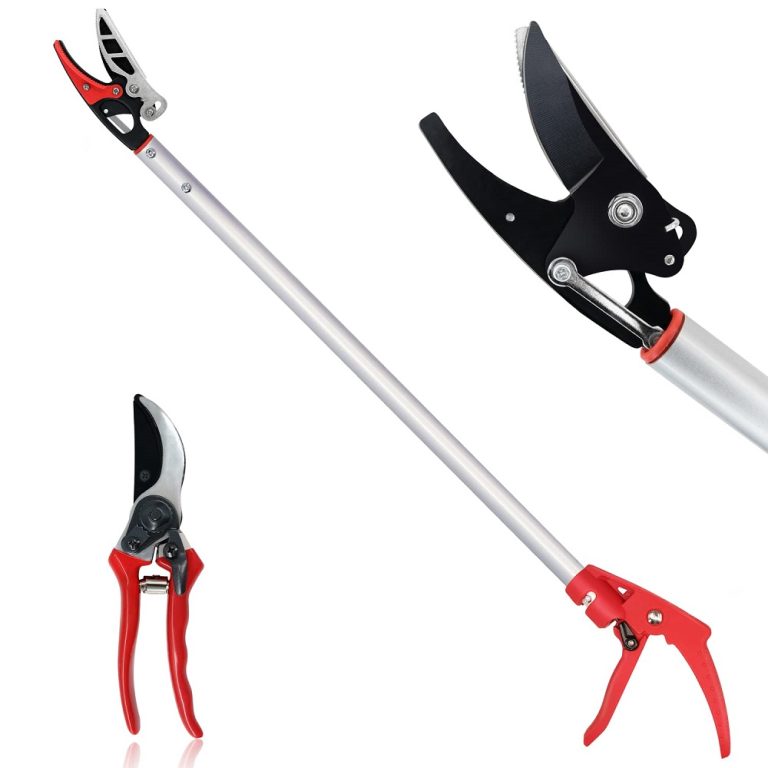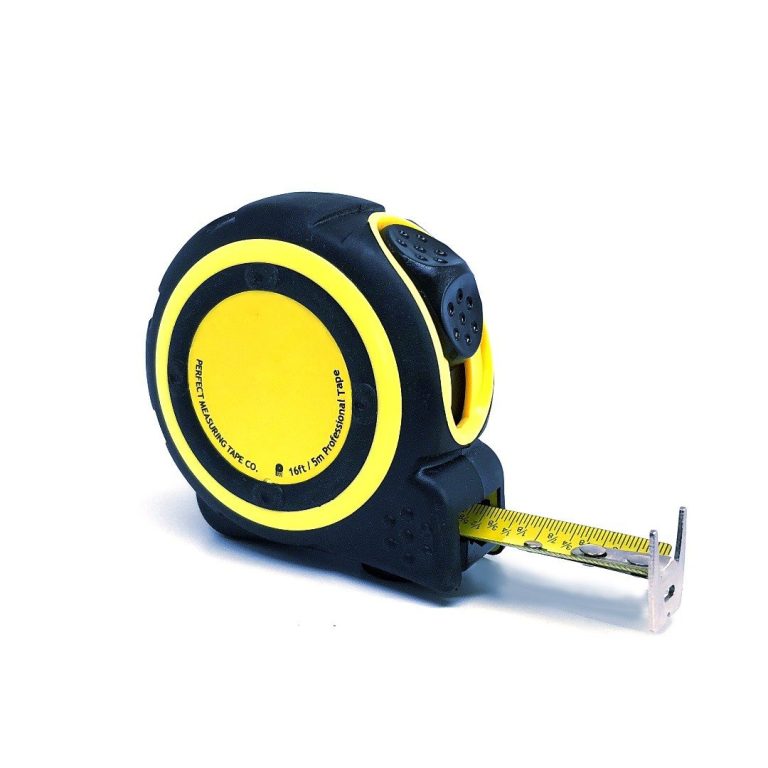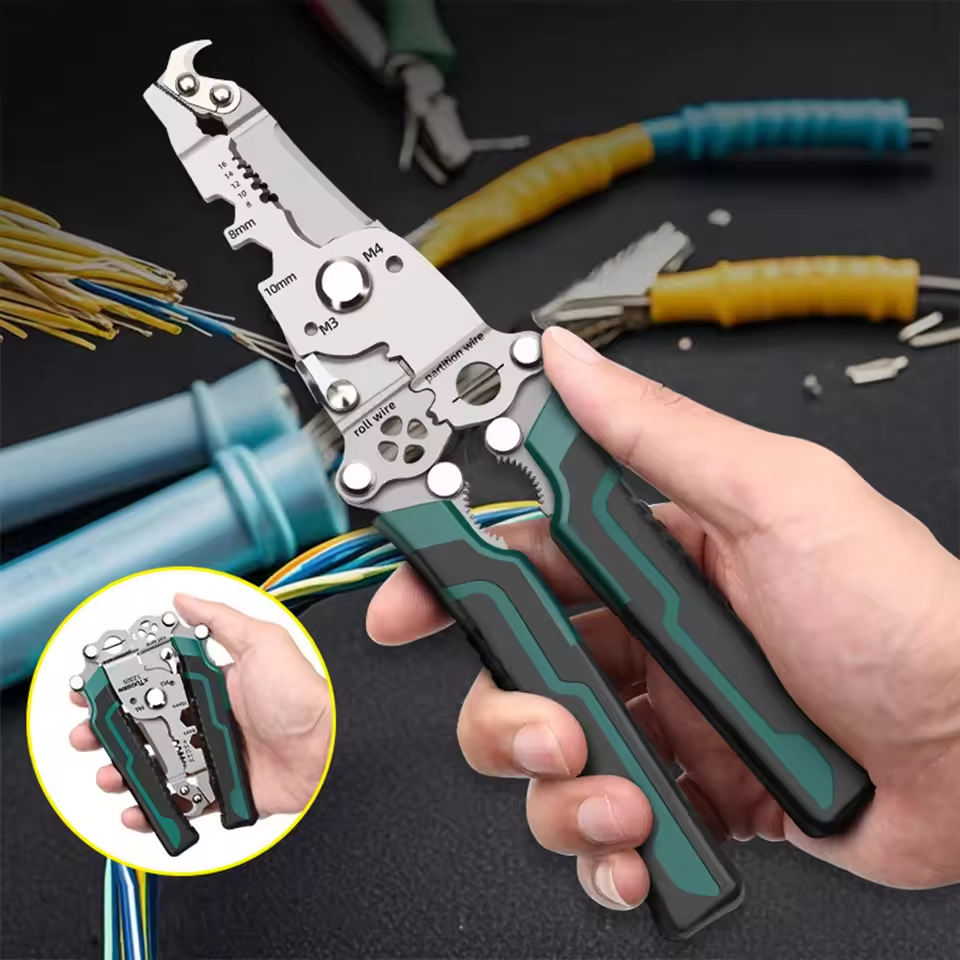Introduction to Hose Pliers
Hose pliers are a must-have tool for DIY enthusiasts and professionals alike. These specialized pliers are designed for gripping and manipulating hoses, particularly in tight spaces. Whether you are working on automotive repairs, plumbing, or HVAC systems, hose pliers can make your job easier. They allow for the removal and installation of hose clamps and are essential for preventing damage to hoses when applying pressure. In this blog post, we will dive into the various types of hose pliers available on the market. We will also discuss key factors to consider when selecting the right pair for your needs.
From material quality to design features, we’ll cover everything you need to know to make an informed decision. By understanding the function and importance of hose pliers, you’ll be able to choose the best tool for your projects. Let’s explore the world of hose pliers and discover how they can enhance your toolbox.

Types of Hose Pliers
When you’re in the market for hose pliers, you’ll find a variety of types designed for different applications. Here’s a rundown of the most common hose pliers you may encounter:
Standard Hose Clamp Pliers
These are the go-to tool for most clamp removal jobs. They have a simple design with jaws that fit around clamps, allowing you to squeeze and release them easily. Look for models with pivoting jaws to handle clamps at various angles.
Flexible Hose Clamp Pliers
Flexible hose clamp pliers come with a cable-operated mechanism. This feature lets you reach clamps located in tight or awkward spaces. They are ideal for working on automotive cooling systems or deep inside appliances.
Hose Pinching Pliers
Hose pinching pliers are specially designed to temporarily seal hoses. They prevent fluid from leaking out when you are replacing parts or during repairs. These pliers usually have round or flat jaws depending on the type of hose you’re working with.
Locking Hose Clamp Pliers
For tasks requiring a strong grip, locking hose clamp pliers are your best ally. They clamp down and lock onto a hose or clamp, leaving your hands free to work. They’re especially useful when working alone or in slippery conditions.
Slip-Joint Hose Pliers
Slip-joint hose pliers offer adjustable jaw widths to handle different clamp sizes. They resemble traditional pliers but with a groove in the jaws for a secure hold on hoses and clamps.
Hose Removal Pliers
Sometimes you need to remove hoses without damaging them. Hose removal pliers have a unique design with a notch in the jaw to catch the edge of the hose. They help you pry the hose off without tears or punctures.
Remember, the right type of hose pliers for your project depends on the job at hand. Consider the location and size of the clamps or hoses you will be working with when making your selection. By keeping this in mind, you’ll choose a pair of hose pliers that best suit your needs.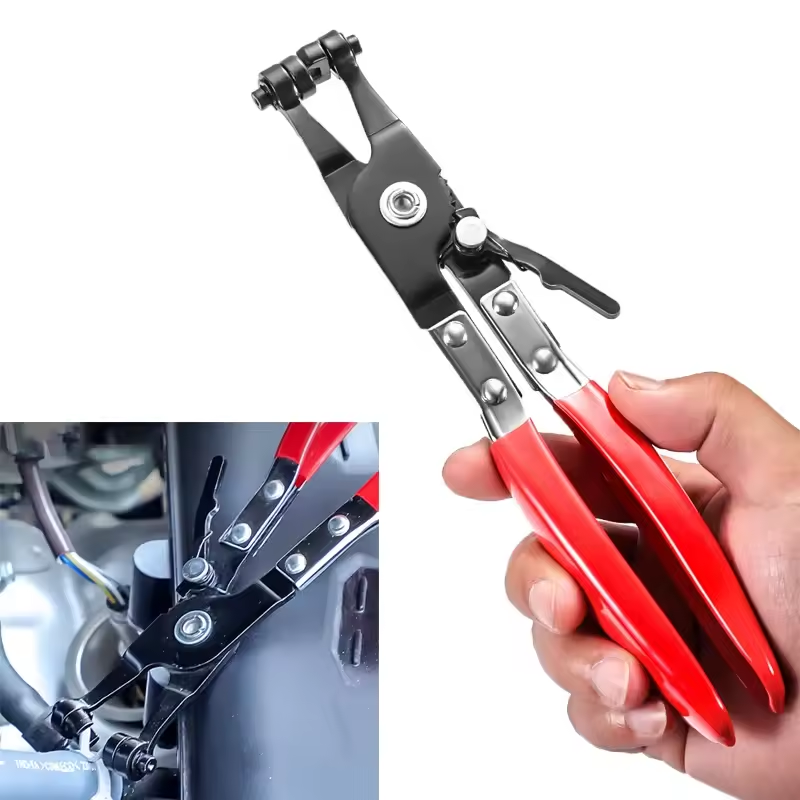
Factors to Consider When Choosing Pliers
When selecting pliers, there are several factors you should consider to ensure you get the right tool for your needs. Here’s what to keep in mind:
Durability and Quality
Choose pliers made with high-quality materials. Stainless steel or chrome vanadium are both durable choices. A solid construction means longer tool life.
Jaw Design and Size
Consider the plier’s jaw design. It should match the type of clamps you usually work with. The size of the jaws matters too. They must fit the clamps and hoses you’re dealing with.
Handle Comfort
Select pliers with handles that feel comfortable in your hand. Rubber or padded handles can reduce hand fatigue during long projects.
Locking Mechanism
If you need hands-free operation, check if the pliers have a locking mechanism. This can be very helpful in certain situations.
Pivot and Flexibility
For hard-to-reach areas, look for pliers with pivoting or flexible jaws. This feature adds versatility and ease of use.
Adjustment Features
Adjustment features like slip-joints can help accommodate various clamp sizes. This makes the pliers more adaptable to different tasks.
Brand and Warranty
Well-known brands often offer better quality and warranties. Consider this when making your purchase. It might be worth investing in a reputable brand.
By taking into account these factors, you can choose hose pliers that will serve you effectively for various tasks and last a long time.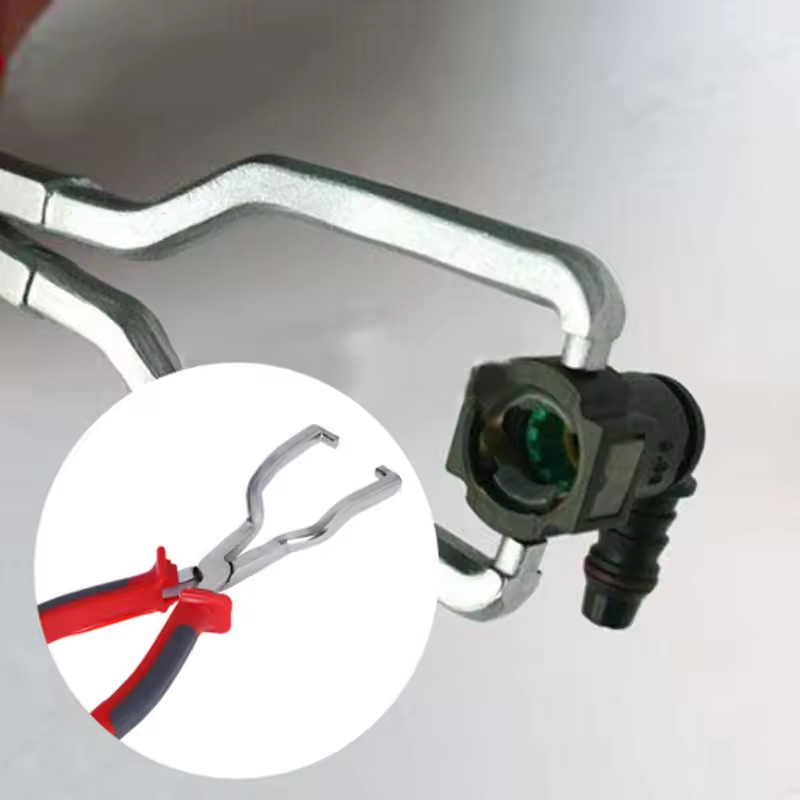
The Best Materials for Hose Pliers
Choosing the right materials for hose pliers is vital for their durability and performance. When shopping, focus on these high-quality selections:
Stainless Steel
Stainless steel is a top choice for pliers. It resists rust and lasts long. You can rely on it for regular use.
Chrome Vanadium
Chrome vanadium offers great strength and durability. Pliers made from this alloy withstand heavy-duty work easily.
High-Carbon Steel
High-carbon steel is hard and strong. It is a good choice for tools that need to last.
Each material has its merits. Think about how often you’ll use the pliers. Also, consider the environments you’ll work in. Humid or corrosive settings demand rust-resistant materials like stainless steel. For heavy usage, materials like chrome vanadium or high-carbon steel are ideal. They handle pressure and wear well.
Remember, the best pliers are those that balance toughness with practical use. They should feel right in your hand and deal with the tasks you throw at them. The right materials help ensure that your pliers won’t fail when you need them most.
How to Use Hose Pliers Safely and Effectively
Knowing how to use hose pliers properly is key to their effectiveness and your safety. Follow these steps to ensure you are using your hose pliers in the most effective way:
- Prepare Your Work Area: Clear any clutter to create a safe workspace. Ensure good lighting to see what you’re working on.
- Wear Protective Gear: Always wear safety goggles to protect your eyes from flying debris. Gloves are helpful to protect your hands.
- Inspect The Pliers: Before use, check the pliers for any damage. Damaged tools can cause accidents.
- Use The Right Type: Select the pliers suitable for your task. Using the wrong type can damage the tool or the hose.
- Position The Pliers Correctly: Grip the clamp or hose firmly but don’t squeeze too hard. Over-tightening can cause damage.
- Lock The Pliers If Necessary: If the pliers have a locking mechanism, use it to secure the grip. This helps when you need both hands free.
- Apply Pressure Evenly: When tightening or loosening clamps, apply steady pressure. This prevents slipping and ensures an even grip.
- Work Slowly: Take your time with each step to avoid mistakes. Rushing can lead to injury or damage.
By adhering to these guidelines, you will maximize your control over the tool. This will make your task smoother and protect both you and the materials you are working with. Remember, the right technique is as important as choosing the right pliers.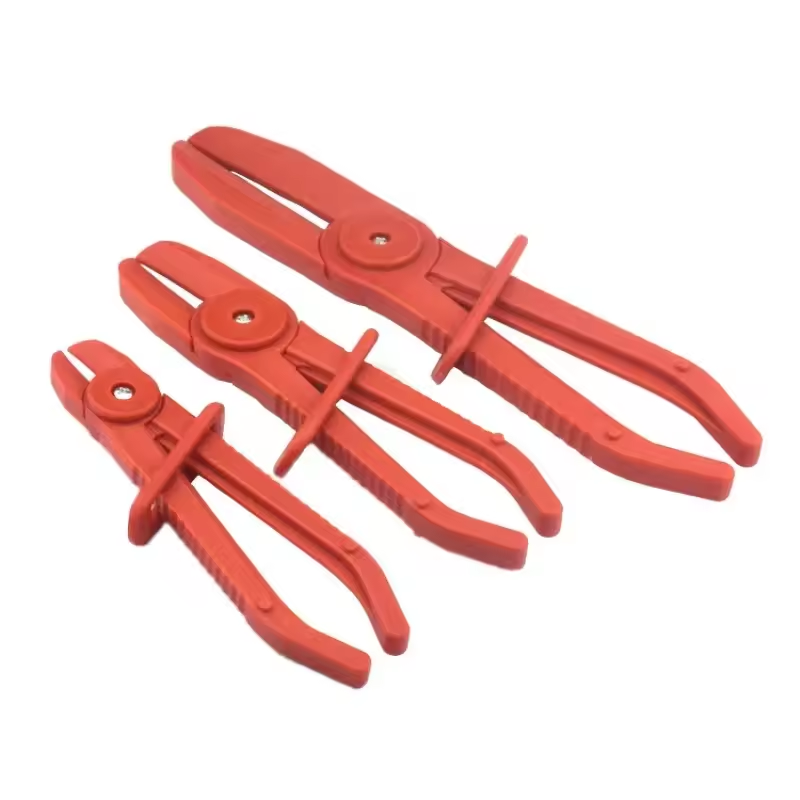
Maintenance Tips for Hose Pliers
Maintaining your pliers is crucial for their longevity and performance. Here are practical tips you can follow to keep your hose pliers in top condition:
- Clean After Use: Always wipe your pliers with a clean cloth after each use. Remove dirt, grease, and any other residues.
- Check for Rust: Inspect your pliers regularly for signs of rust. If you spot any, clean with a rust remover and dry thoroughly.
- Lubricate Joints: Apply lubricant to the joints and moving parts. This prevents stiffness and wear.
- Tighten Loose Parts: Over time, screws and bolts may loosen. Tighten them to ensure the pliers function well.
- Store Properly: Keep your pliers in a dry, cool place. Use a toolbox or a pouch to prevent damage.
- Inspect for Damage: Before use, look for any damage or wear. Replace the tool if you find any flaws.
- Handle With Care: Avoid dropping your pliers. This can misalign the jaws or damage other parts.
By following these simple maintenance tips, your pliers will be ready for use when you need them. Regular care can save you time and money in the long run by avoiding the need for replacements.
Top Brands and Recommendations for Hose Pliers
For quality and reliability, choosing top brands for hose pliers is wise. Trusted brands often use superior materials and offer better warranties. Plus, they keep ergonomics in mind. Here are some brands worth considering:
Knipex
Knipex is known for long-lasting tools. Their pliers come with precise locking mechanisms. They feel solid and perform well in tough situations.
Channellock
Channellock offers pliers with a firm grip and comfortable handles. Their tools are a go-to for many in the trade.
Craftsman
Craftsman has a reputation for durability. Their pliers are no exception. They tend to be a reliable choice for hobbyists and professionals.
Irwin
Irwin’s hose pliers often feature innovative designs. They provide a tight lock and ease of use for various tasks.
Tekton
Tekton makes robust tools at a reasonable price. Their pliers provide good value for both amateurs and experts.
When shopping, look beyond just the brand. Match the pliers to the tasks you perform most. Seek features that make work comfortable and efficient. Keep in mind the types discussed earlier and their best uses. Make sure the size and jaws fit the hoses or clamps you work with.
Lastly, always check product reviews. They can provide real-world insights. Combine this knowledge with the guide provided here. This will help you invest in hose pliers that suit your needs best. Remember, the right tool can make a big difference in your success with projects.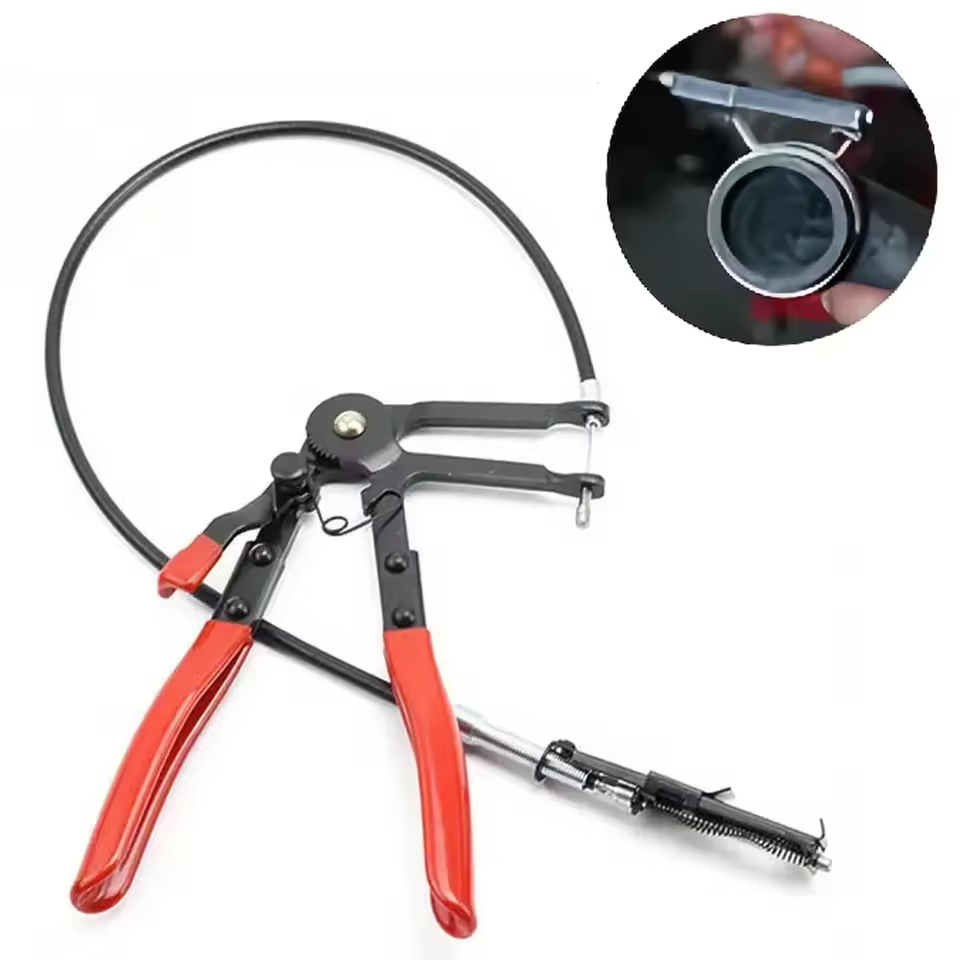
Conclusion: Investing in the Right Hose Pliers
Choosing the ideal hose pliers is crucial for anyone involved in maintenance, repairs, or DIY projects. Pliers that match your specific needs can save you time, prevent damage to parts, and limit potential frustration during tasks. Let’s recap what we’ve learned in this guide.
Prioritize high-quality materials like stainless steel, chrome vanadium, or high-carbon steel. These resist wear and handle pressure well. Always pick pliers with designs and sizes suited to your most common tasks. Comfortable handles are important for long work sessions.
Remember, the right tool enhances safety and efficiency. Check for features such as locking mechanisms and flexible jaws for more challenging jobs. Options with slip-joints add versatility. Consider reputable brands like Knipex, Channellock, Craftsman, Irwin, and Tekton. These brands often bring durability, innovation, and reliability to the table.
Put emphasis on regular maintenance including cleaning, lubrication, and proper storage. This extends your tools’ life and performance. Keeping your well-chosen pliers in top condition will make them a valuable asset in your toolbox for years to come.
Lastly, do remember, investing a little more upfront in the right pliers could mean less expense and hassle down the road. Your tasks will go smoother, and you could avoid the need for repeated tool replacements. Make a wise choice, and your hose pliers will be a trustworthy companion in whatever project you tackle next.
